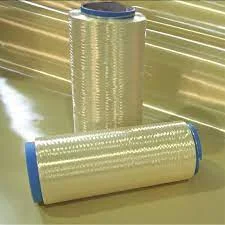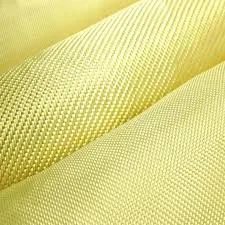In the realm of high-performance materials, constant innovation and breakthroughs are essential to meet the ever-evolving demands of various industries. One such remarkable advancement is the development of Unidirectional Aramid Fiber Fabric. This revolutionary material has garnered significant attention due to its exceptional strength, lightweight nature, and versatility. In this article, we will explore the characteristics, applications, and potential benefits of Unidirectional Aramid Fiber Fabric.
Unidirectional Aramid Fiber Fabric: An Overview
Unidirectional Aramid Fiber Fabric is a composite material composed of aramid fibers arranged in a single direction. Aramid fibers, known for their high strength and heat resistance, are derived from synthetic polymers. The most commonly used aramid fiber is poly-paraphenylene terephthalamide (PPTA), commercially known as Kevlar®. The unidirectional arrangement of these fibers imparts exceptional tensile strength and stiffness to the fabric.

Characteristics and Properties of Unidirectional Aramid Fiber Fabric
Unidirectional Aramid Fiber Fabric possesses several remarkable characteristics that make it an ideal choice for various applications. Firstly, it exhibits an incredibly high tensile strength, surpassing that of steel on a weight-to-strength ratio. This property makes it an excellent candidate for applications where lightweight materials with exceptional strength are required.
Additionally, the fabric offers excellent resistance to impact, abrasion, and fatigue, making it highly durable and long-lasting. It also exhibits remarkable resistance to chemicals, including acids and alkalis, further expanding its potential applications. Furthermore, Unidirectional Aramid Fiber Fabric has a low coefficient of thermal expansion, ensuring dimensional stability even under extreme temperature variations.
Applications of Unidirectional Aramid Fiber Fabric
The unique combination of strength, lightweight nature, and versatility of Unidirectional Aramid Fiber Fabric has led to its adoption in various industries. One of the most prominent applications is in the aerospace industry, where the fabric is used in the construction of aircraft components, such as fuselages, wings, and rotor blades. Its high strength-to-weight ratio allows for increased fuel efficiency and improved overall performance.
Another significant application is in the automotive industry, where Unidirectional Aramid Fiber Fabric is utilized in the manufacturing of lightweight and strong components, including body panels, chassis reinforcements, and interior parts. The use of this fabric helps reduce the overall weight of vehicles, leading to improved fuel economy and reduced emissions.
Furthermore, Unidirectional Aramid Fiber Fabric finds applications in the sporting goods industry, particularly in the production of high-performance equipment such as tennis rackets, hockey sticks, and bicycle frames. Its exceptional strength and lightweight nature contribute to enhanced performance and maneuverability.
Benefits and Future Prospects of Unidirectional Aramid Fiber Fabric
The utilization of Unidirectional Aramid Fiber Fabric offers numerous benefits across various industries. Firstly, its lightweight nature allows for the development of lighter and more fuel-efficient products, contributing to sustainability efforts. Additionally, the fabric's high strength and durability ensure increased product lifespan, reducing the need for frequent replacements.
Moreover, the exceptional resistance to impact and fatigue makes Unidirectional Aramid Fiber Fabric an ideal choice for applications requiring long-term reliability and safety. The fabric's resistance to chemicals and dimensional stability further enhance its suitability for diverse environments and conditions.
Looking ahead, the future prospects for Unidirectional Aramid Fiber Fabric are promising. Ongoing research and development efforts aim to further enhance its properties, expand its range of applications, and optimize manufacturing processes to make it more cost-effective. As industries continue to seek lightweight, strong, and durable materials, Unidirectional Aramid Fiber Fabric is poised to play a pivotal role in shaping the future of high-performance materials.

Conclusion
Unidirectional Aramid Fiber Fabric represents a significant breakthrough in the realm of high-performance materials. Its exceptional strength, lightweight nature, and versatility have made it a preferred choice across various industries, including aerospace, automotive, and sporting goods. With its remarkable properties and numerous benefits, Unidirectional Aramid Fiber Fabric is set to revolutionize the way we design and manufacture products, paving the way for a more sustainable and efficient future.

